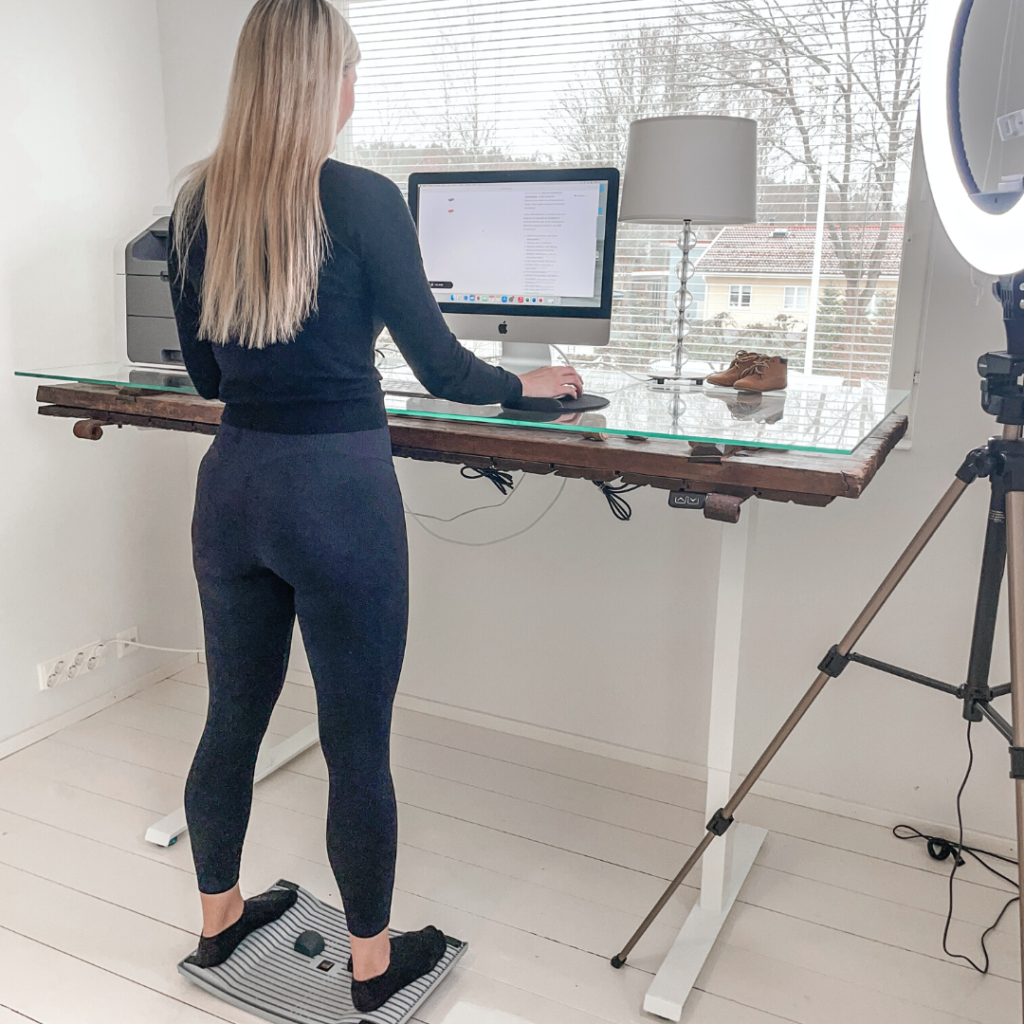Building an ergonomic home office involves creating a workspace that supports your body’s natural posture and movement while reducing strain and discomfort. Start by selecting an adjustable desk for proper working height and supportive chair, positioning your monitor at eye level, and ensuring your keyboard and mouse allow for neutral wrist positions. Incorporate proper lighting to reduce eye strain and make room for movement throughout your workday. Adding ergonomic accessories like footrests or balance or active boards can further enhance comfort and promote active working. Regular adjustments to your setup based on how your body feels will help maintain long-term workplace wellbeing.
Why is ergonomics important for your home office?
Ergonomics is vital for your home office because it directly impacts your physical health and daily productivity. When your workspace supports your body’s natural position and movements, you reduce the risk of developing musculoskeletal issues like back pain, neck strain, and carpal tunnel syndrome.
Poor ergonomics leads to common problems that affect office workers daily. These include tension headaches from improper monitor positioning, lower back pain from inadequate lumbar support, and wrist strain from incorrect keyboard placement. Over time, these issues compound, potentially leading to chronic conditions that affect your ability to work effectively.
The benefits of proper workplace ergonomics extend beyond physical comfort. When you’re not constantly shifting to relieve discomfort, you can maintain better focus and concentration. This improved work efficiency translates to better output and reduced fatigue at the end of your workday. Additionally, an ergonomic workspace helps prevent long-term health issues that might otherwise develop over years of poor positioning.
What are the essential components of an ergonomic home office?
An ergonomic home office requires several fundamental elements working together to support proper posture and movement. The foundation begins with an adjustable desk that allows you to set the perfect height for your body—ideally, your elbows should rest at approximately 90 degrees when typing.
A supportive chair with proper lumbar support is crucial for maintaining spinal alignment during seated work. Look for adjustable features including height, armrests, and seat depth to customize the fit to your body. Your feet should rest flat on the floor or on a footrest to maintain proper circulation.
Monitor positioning greatly affects neck strain—place your screen at eye level, about an arm’s length away. For keyboard and mouse placement, keep them close enough to avoid reaching, with wrists in a neutral position. Consider using a laptop stand for optimal screen positioning if needed to achieve the proper height relationship between your keyboard and monitor.
Proper lighting reduces eye strain—position your workstation perpendicular to windows to minimize glare, and supplement with task lighting as needed. Finally, ensure your workspace allows for movement throughout the day, with enough room to change positions, stretch, and incorporate active working equipment like a balance board for standing periods.
How do you set up an ergonomic workstation on a budget?
Creating an ergonomic workstation doesn’t require expensive equipment—many effective solutions can be implemented with minimal investment. Start by repurposing existing furniture and making targeted adjustments rather than replacing everything at once.
For monitor height, use stable household items like books or wooden blocks to raise your screen to eye level. If purchasing a separate monitor isn’t possible, consider an inexpensive laptop stand to elevate your screen while using a separate keyboard. For chair support, a rolled-up towel can provide lumbar support if your chair lacks this feature.
DIY solutions can address many ergonomic needs:
- Use a box or sturdy crate as a standing desk converter
- Create a document holder by repurposing a clipboard or book stand
- Improve wrist positioning with a rolled-up hand towel as a keyboard rest
- Repurpose a small box or stack of books as a footrest
When budgeting for ergonomic upgrades, prioritize items that address your specific discomfort. If you experience back pain, consider improving your chair or using a specific tool, such as an active board – that encourages movement while working standing up. For neck strain, focus on monitor positioning. This targeted approach delivers the best value while working within financial constraints.
What are the benefits of a standing desk in your home office?
Standing desks offer significant benefits by allowing you to alternate between sitting and standing throughout your workday. This postural variation helps reduce the negative health impacts associated with prolonged sitting, including improved circulation, reduced back discomfort, and potentially better energy levels and focus.
The optimal approach isn’t standing all day, but rather mixing positions. Experts typically recommend beginning with 30-60 minutes of standing per day, gradually increasing to a 1:1 or 2:1 ratio of sitting to standing as your body adjusts. The proper height for a standing desk should position your elbows at roughly 90 degrees when typing, with your screen at eye level.
When transitioning to a standing desk, start slowly to avoid fatigue or discomfort. Use an anti-fatigue mat or balance board to reduce pressure on your feet and lower back while encouraging subtle movement. Pay attention to your posture while standing—avoid leaning on the desk or shifting weight to one leg for extended periods.
The greatest benefit comes from regular position changes rather than static standing. Consider setting reminders to prompt these transitions, helping you develop a natural rhythm between sitting and standing that works best for your body and workflow.
How can you incorporate movement into your workday?
Adding movement throughout your workday is essential for maintaining physical wellbeing and mental clarity. Schedule short micro-breaks every 30-45 minutes to stand up, stretch, or walk briefly—these quick resets improve circulation and reduce muscle tension without significantly interrupting workflow.
Simple desk exercises can be incorporated even during busy periods:
- Shoulder rolls and neck stretches to release upper body tension
- Seated spinal twists to mobilize your back
- Calf raises while standing to improve lower limb circulation
- Wrist and finger stretches to counteract typing strain
Take advantage of opportunities to build movement into your work routines. Consider walking meetings for phone calls, standing during video conferences, or moving to different locations in your home for various tasks. These natural movement patterns help maintain energy levels throughout the day.
Equipment like balance boards or active standing tools encourage dynamic movement while working. These solutions promote subtle, continuous movement that engages your core muscles and improves posture without disrupting concentration. Even simple adjustments like a light movement or changing positions can significantly benefit your physical wellbeing during long work sessions.
What are the key takeaways for maintaining an ergonomic home office?
The most important principle for maintaining an ergonomic home office is making continuous adjustments based on how your body responds. No single setup works perfectly forever—regularly reassess your comfort and make incremental changes as needed.
Listen to your body’s signals—discomfort is valuable feedback indicating something needs adjustment. Pay attention to areas where tension accumulates during your workday and address these issues promptly before they develop into more serious problems.
Remember that movement is essential—even the most perfectly designed static workspace can’t overcome the negative effects of prolonged immobility. Build regular movement opportunities into your routine, whether through scheduled breaks, position changes, or active working equipment.
At Gymba, we understand the challenges of creating truly ergonomic workspaces. Our solutions are designed to support natural movement and proper positioning throughout your workday. Products like our Activation Board encourage subtle, continuous movement while standing, helping maintain circulation and engagement without disrupting your workflow. We believe small, consistent movement is key to workplace wellness—something easily integrated into any home office setup with the right tools and awareness.

